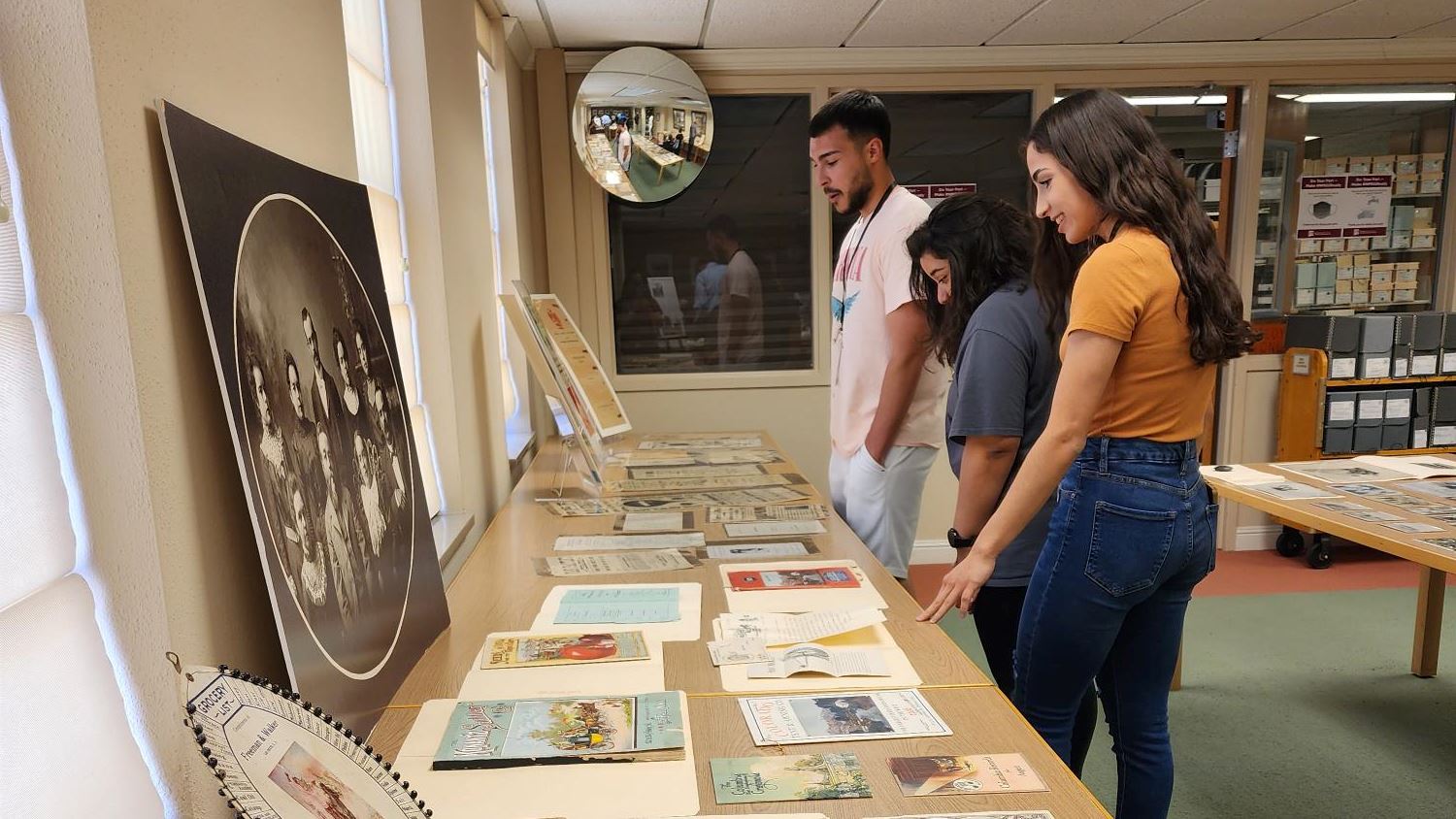The New Mexico State University Library has completed the Amador Family Correspondence Digitization Project, a multi-year initiative funded by the National Endowment for the Humanities to preserve and provide online access to thousands of historic letters that document life in southern New Mexico and northern Mexico from the 19th to early 20th centuries.
Led by principal investigator Monika Glowacka-Musial, metadata librarian at the NMSU Library, the project digitized more than 16,000 pages of letters written by members of the prominent Amador family of Las Cruces. Their correspondence offers a vivid glimpse into the social, cultural and economic history of the borderlands.
The full digital collection is now publicly available through the NMSU Library’s digital collections website at https://oa.nmsu.libnova.com/collection/10317/amador-family-correspondence-1856-1949, where users can explore the complete set of letters.
Since the project’s launch, a dedicated team from the NMSU Library worked to digitize, catalog and preserve the Amador Family Correspondence materials for long-term public access. The project was supported by 13 student technicians and seven additional staff members from across the university, whose diverse academic and professional backgrounds contributed to its success.
“The correspondence from the Amador family has been used for more than half a century by scholars interested in the social life and customs of the borderlands during the 19th and early 20th centuries,” said Dennis Daily, department head of the NMSU Library’s Archives and Special Collections. “Until now, the only access was in our research room here in Branson Library. Now this massive source of primary documentation is easily available worldwide, in high-quality, searchable digital images, to anyone with online access.”
Daily said the correspondence holds wide-ranging potential for researchers.
“The Amador correspondence will inform research across a variety of subject fields, from social history and transborder studies to linguistics and the history of health and medicine in Borderland communities,” he said. “The potential applications for these first-hand historical documents are vast, and we can’t wait to see how they are implemented in future scholarship.”
Glowacka-Musial emphasized that the project’s success was the result of broad collaboration.
“This work brought together students, librarians, archivists, systems staff and faculty from across campus,” she said. “Our student technicians learned to decipher 19th-century handwriting, handle fragile manuscripts and create detailed metadata in two languages. Their dedication and curiosity truly carried this project.”
One of those students, Angela Tena, a nursing major, said the project helped her connect with the past in a personal way.
“I worked on reading and extracting metadata from the Amador family letters,” Tena said. “It was fascinating to see how much history and emotion were captured in these documents. I learned a lot about the importance of bilingual accessibility and how these letters help us connect with the past in meaningful ways.”
When federal funding concluded several months early, the NMSU Library dean’s office provided additional support to ensure the work was completed on time.
“I’m very proud of everyone involved in the Amador project,” said Kevin Comerford, dean of the NMSU Library. “Browsing through this digital collection – the depth of the descriptive and interpretive content, and the high quality of the imaging work – is very apparent. The project team, which included library faculty, staff and student employees, overcame several challenges to complete this resource. These included migrating to a new digital publishing system and an unexpected reduction in the grant funds for the project. Despite these difficulties, the team persevered and achieved a truly wonderful result.”
“This outcome demonstrates what is possible when institutional commitment and community interest align,” Glowacka-Musial said. “We are deeply grateful to everyone who contributed their expertise and passion to make the Amador Family Correspondence accessible to all.”
As part of the NEH grant team, Jennifer Olguin, associate professor and Rio Grande Historical Collections archivist at the NMSU Library, helped prepare and submit the successful proposal and oversaw the day-to-day implementation.
“Working on this project offered me a deeper understanding of the Amador family and their historical significance,” Olguin said. “Collaborating closely with our student assistants brought the family’s story to life, revealing personal details and cultural subtleties that added depth to the collection.”
Olguin said mentoring students was one of the most rewarding aspects of the process.
“The most meaningful part for me was mentoring the students, meeting with them weekly, discussing their findings and watching their curiosity grow,” she said. “Through their engagement, I learned even more about the Amadors and the important role they played in our region’s history.”
Daily added that the letters offer deep human insights into life in the borderlands.
“We can learn a lot about the way people experienced past events by reading their original correspondence,” he said. “The letters of the Amador family provide an intimate view into everyday life – business, education, religion, health, relationships, cultural identity and family. They reveal a critical period of intermingling among Mexicans, Indigenous peoples and U.S. immigrants following the Mexican-American War.”
The project also established new technical infrastructure for future digitization initiatives, including the adoption of LibSafe GO and LibNova OpenAccess platforms for digital preservation and discovery.
“The completion of this project demonstrates how collaborative scholarships and digitization can transform historical archives into living resources for education and research,” Glowacka-Musial said. “We’re proud to make this collection accessible to anyone, anywhere.”

